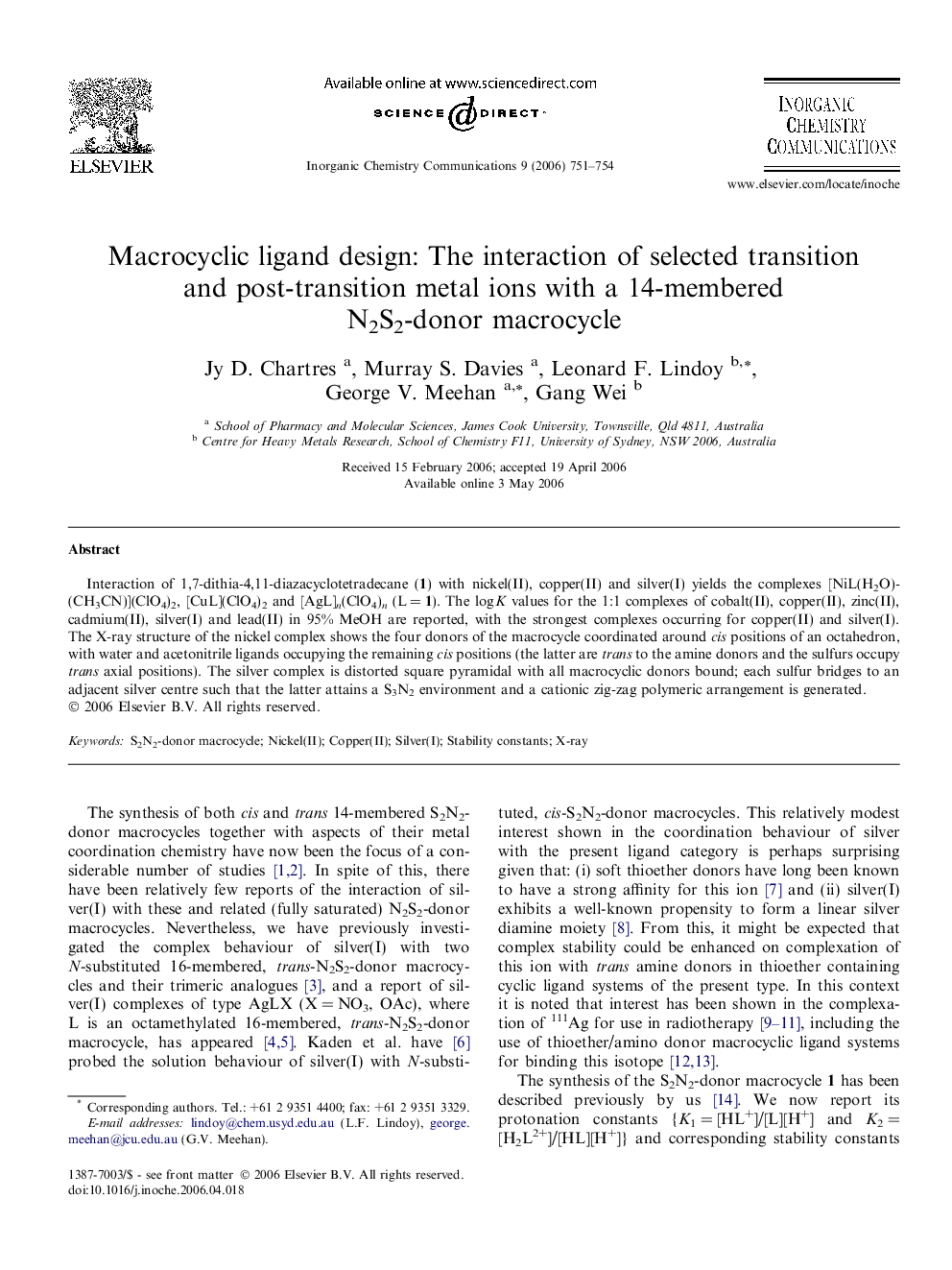| Article ID | Journal | Published Year | Pages | File Type |
|---|---|---|---|---|
| 1303648 | Inorganic Chemistry Communications | 2006 | 4 Pages |
Interaction of 1,7-dithia-4,11-diazacyclotetradecane (1) with nickel(II), copper(II) and silver(I) yields the complexes [NiL(H2O)(CH3CN)](ClO4)2, [CuL](ClO4)2 and [AgL]n(ClO4)n (L = 1). The log K values for the 1:1 complexes of cobalt(II), copper(II), zinc(II), cadmium(II), silver(I) and lead(II) in 95% MeOH are reported, with the strongest complexes occurring for copper(II) and silver(I). The X-ray structure of the nickel complex shows the four donors of the macrocycle coordinated around cis positions of an octahedron, with water and acetonitrile ligands occupying the remaining cis positions (the latter are trans to the amine donors and the sulfurs occupy trans axial positions). The silver complex is distorted square pyramidal with all macrocyclic donors bound; each sulfur bridges to an adjacent silver centre such that the latter attains a S3N2 environment and a cationic zig-zag polymeric arrangement is generated.
Graphical abstractMacrocycle 1,7-dithia-4,11-diazacyclotetradecane yields 1:1 complexes with Ni(II), Cu(II) and Ag(I) and shows a binding preference for Cu(II) and Ag(I) over Co(II), Zn(II), Cd(II) and Pb(II). The nickel complex is monomeric and 6-coordinate while the silver species is polymeric with a ‘stacked’ columnar arrangement; each silver ion adopts a distorted square pyramidal geometry.Figure optionsDownload full-size imageDownload as PowerPoint slide
